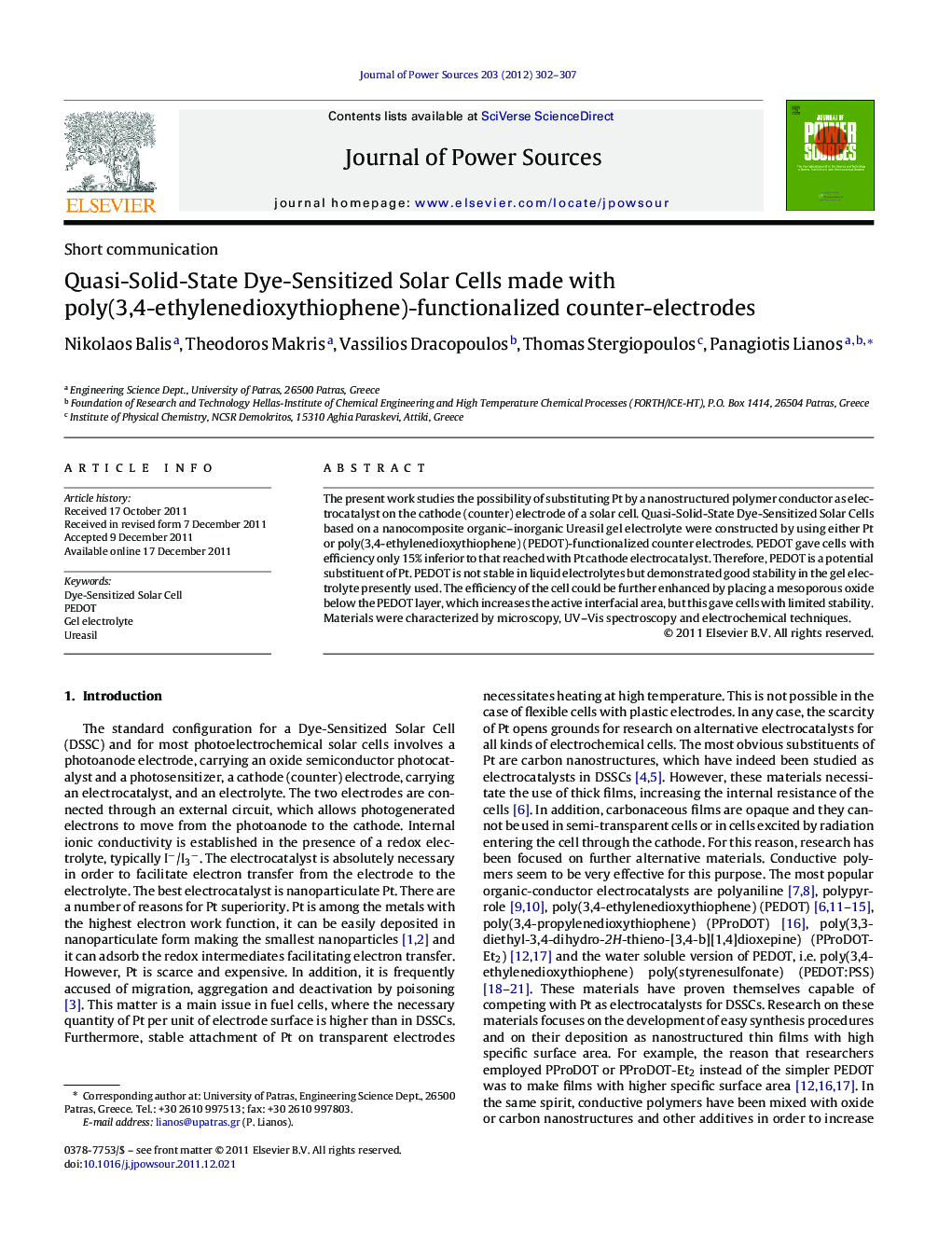| Article ID | Journal | Published Year | Pages | File Type |
|---|---|---|---|---|
| 1288368 | Journal of Power Sources | 2012 | 6 Pages |
The present work studies the possibility of substituting Pt by a nanostructured polymer conductor as electrocatalyst on the cathode (counter) electrode of a solar cell. Quasi-Solid-State Dye-Sensitized Solar Cells based on a nanocomposite organic–inorganic Ureasil gel electrolyte were constructed by using either Pt or poly(3,4-ethylenedioxythiophene) (PEDOT)-functionalized counter electrodes. PEDOT gave cells with efficiency only 15% inferior to that reached with Pt cathode electrocatalyst. Therefore, PEDOT is a potential substituent of Pt. PEDOT is not stable in liquid electrolytes but demonstrated good stability in the gel electrolyte presently used. The efficiency of the cell could be further enhanced by placing a mesoporous oxide below the PEDOT layer, which increases the active interfacial area, but this gave cells with limited stability. Materials were characterized by microscopy, UV–Vis spectroscopy and electrochemical techniques.
► Quasi-Solid-State Dye Sensitized Solar Cell with high efficiency (6.9%). ► Solid gel electrolyte acting as adhesive holding electrodes together. ► Low cost cell not necessitating sealing or encapsulation. ► Substitution of Pt electrocatalyst by an organic conductor electrocatalyst, PEDOT. ► Accommodation of PEDOT within the solar cell without risk of detachment.
